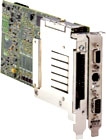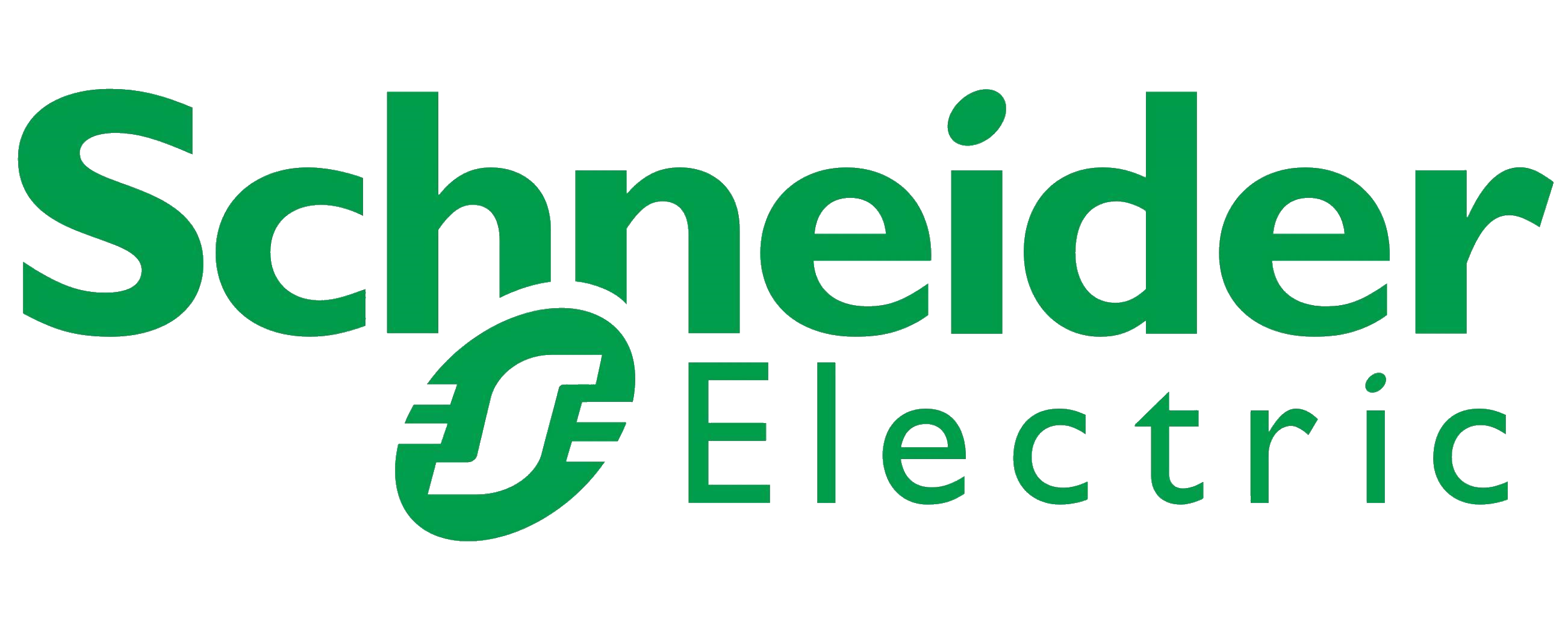Since its invention of the PLC 40 years ago, Modicon has come a long way. Now part of the Telemecanique brand, Modicon products remain the most advanced in programmable automation technology.

Back in 1968, if one was designing a control system, there were two choices – hard-wired relays or hard-wired solid-state logic. Both of these shared the same problem – the hard wiring. If a change was needed, however minor, it meant a costly and time-consuming re-wiring job.
Major changes were a challenge, with constant concerns about whether there would be sufficient space in the panel to accommodate additional relays or logic boards. There was also the prospect of the equipment being out of commission for days, if not weeks, while the modifications were being carried out.
The first programmable controller
Small wonder then, that General Motors issued the control industry with a challenge: develop a control product that is easy to use and that will cope easily with modifications. This challenge led directly to the development of the programmable Modular Digital Controller, or Modicon. In all but name, this was the world’s first PLC and, indeed, it very soon came to be known as the Modicon PLC.
The first Modicon to go into regular production was the Modicon 084, introduced in 1969. At least one of these machines was imported into the UK, where it was widely used for demonstrations. The response was initially mixed. Potential users loved the unmatched flexibility provided by the Modicon, but they were wary of a costly item of equipment they couldn’t maintain themselves!
In those days, maintenance staff were quite used to getting out the soldering iron to repair faulty boards in hard-wired logic systems. To be told, therefore, that they weren’t allowed to touch the innards of their Modicon came as something of a shock!
The first PLCs used in live projects in the UK were Modicon 184 machines, which were essentially an enhanced version of the original 084. They were very successful, with over $5 million worth being sold worldwide.
But Modicon was never a name to be complacent. Then, as now, it was continually investing in product development to maintain its leading market position. The result was the introduction of the pioneering Modicon 284 in 1975.
The 284 was the first PLC to use a microprocessor – incredible as it may now seem, the earlier models were built entirely from discrete components! The 284 also used UV-erasable PROM for program storage, instead of the cumbersome and bulky ferrite memory used in earlier models.
1975 also saw the launch of the Modicon 384, which scored yet another world first by incorporating digital process algorithms for continuous control.
Open Modbus connectivity
In the late 1970s, thoughts in the control industry were starting to turn to ways in which individual PLCs could be linked together, as well as to other intelligent equipment, to form distributed control systems. As might be expected, Modicon led the way with the Modbus communication system. This proved so dependable that it rapidly became an industry standard and, almost three decades later, Modbus and its derivatives are still widely used today.
Another major step forward in which Modicon took the lead was the provision of graphical operator interfaces on the shop floor. One of the pioneering products in this area was the FactoryMate Plus industrial workstation, launched in 1990, which also provided facilities for trending, data logging and reporting – functionality which has been built upon by products in the current Magelis range, and the more recent introduction of the best-in-class Vijeo Citect SCADA.
The pace of innovation with Modicon products has never slowed and, when the early years of the 1990s saw the control industry starting to grapple with the issue of openness, Modicon once again took the lead with the ModConnect Partners Program, and the implementation of Profibus and Ethernet connectivity for Modicon products. The Quantum range, which first became available in 1994, was the first truly open approach to automation control.
Modicon’s pioneering excellence
Another important advance from Modicon was the first ever web-based PLC, where both in-rack and CPU based solutions provided remote web access to the PLC for control, monitoring and diagnostics.
By the turn of the century, Modicon had been acquired by Schneider Electric, and the name Modicon had fallen under the aegis of the Telemecanique brand of Schneider Electric.
The line-up in both hardware and software had been expanded with the Micro and Premium PLC platforms, the Momentum controller for distributed I/O applications, and the ground-breaking Transparent Factory concept, which aims, among other things, to make information from the control system readily available to supervisory and management systems.
Continuing its pioneering excellence, Schneider Electric was again the first in the market to bring standard Internet protocol SOAP XML down to the PLC environment. This gave upstream business application software direct access to shop-floor data, thereby cutting out layers of middleware complexity and expense.
Also around the turn of the century, suppliers started to move away from the term PLC, which over the years had become very inappropriate as the capabilities of modern machines clearly extend far beyond simple logic. The preferred description today, certainly for high-end machines, is PAC, or programmable automation controller.
Collaborative automation
In the new century, the enhanced investment in development made possible by the enormous resources of Schneider Electric has culminated in a raft of new and trend-setting products. The most significant of these is Unity, which takes open technology a step further, as it is a portfolio of software and hardware products that that takes a collaborative approach to allow system integrators to implement systems that include a wide variety of equipment, potentially from different suppliers.
At the heart of the Unity hardware offer are powerful new CPUs for Modicon Premium and Quantum PACs, and an enhanced PCI bus co-processor card for PC-based control with the new Atrium. Features include large memory capacity, high operating speed, integral USB ports for programming, and on-board Ethernet ports with embedded web server capability for easy integration into Transparent Ready architectures.
Complementing the Unity hardware is Unity Pro software, an easy-to-use programming, debugging and operating package. Common to Modicon Premium, Quantum and Atrium PACs, Unity Pro makes it possible for users to select the most appropriate and cost-effective hardware for the application in hand, while ensuring full software compatibility with other hardware platforms. For users of Modicon legacy equipment, Unity Pro also provides a clear migration path from the older Concept/PL7 software.
Conforming fully to the IEC61131-3 programming standard, Unity Pro features open client/server architecture that uses the W3C universal standard, XML. This means that users can access different parts of the software, and embed them into different applications.
Recent developments
Recent developments that serve to further confirm the ongoing leadership of the Modicon name in automation and control, include:
• The new Modicon 340 PAC. A compact and rugged mid-range controller, the Modicon 340 offers high performance with true multi-task processing and support for all five IEC61131-3 programming languages. It incorporates up to 4MB of external memory and an SD card slot that can be used for program backup, and to allow the fast loading of pre-prepared programs. It also has a USB port and two additional communication ports that can be configured as Ethernet, CANopen or Modbus.
• The Modicon Quantum Safety Controller. IEC compliant, SIL2 certified for use in critical applications to ensure the safety of personnel, plant and production tools, as well as the environment, the new Modicon Quantum Hot Standby system integrates both hot standby advanced features and new safety capabilities. It therefore delivers both safety and high availability with ease.
The story of the development of the programmable controller is, at times, convoluted. However, even though the devices have changed beyond recognition over the past four decades, one thing has remained constant: from the outset, Modicon’s name represented the best and the most advanced products in programmable automation technology. Forty years later, it still does.
Recent developments
Recent developments that serve to further confirm the ongoing leadership of the Modicon name in automation and control, include:
• The new Modicon 340 PAC. A compact and rugged mid-range controller, the Modicon 340 offers high performance with true multi-task processing and support for all five IEC61131-3 programming languages. It incorporates up to 4MB of external memory and an SD card slot that can be used for program backup, and to allow the fast loading of pre-prepared programs. It also has a USB port and two additional communication ports that can be configured as Ethernet, CANopen or Modbus.
• The Modicon Quantum Safety Controller. IEC compliant, SIL2 certified for use in critical applications to ensure the safety of personnel, plant and production tools, as well as the environment, the new Modicon Quantum Hot Standby system integrates both hot standby advanced features and new safety capabilities. It therefore delivers both safety and high availability with ease.
The story of the development of the programmable controller is, at times, convoluted. However, even though the devices have changed beyond recognition over the past four decades, one thing has remained constant: from the outset, Modicon’s name represented the best and the most advanced products in programmable automation technology. Forty years later, it still does.
To learn more about Modicon, visit the Schneider Electric website.


